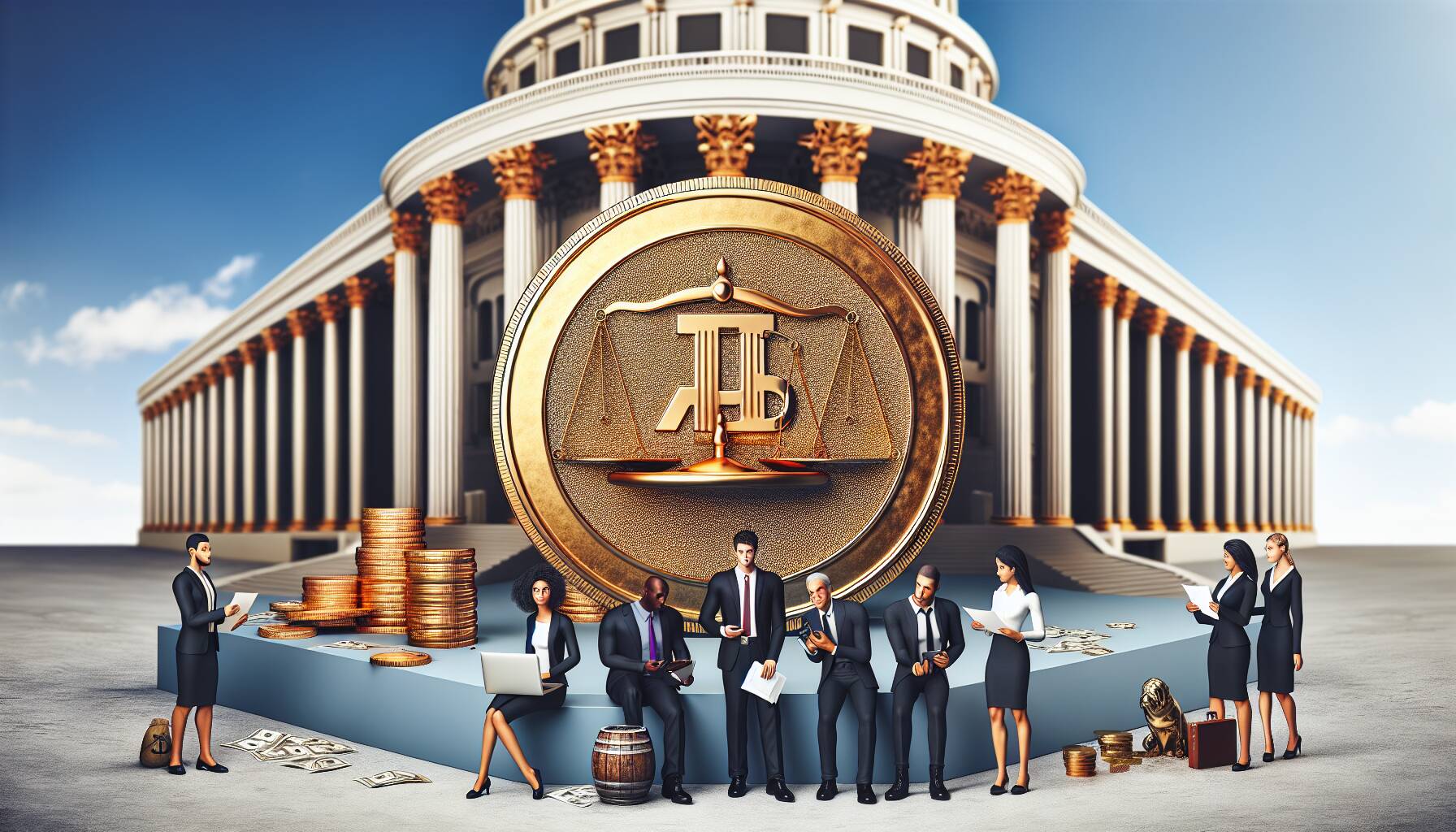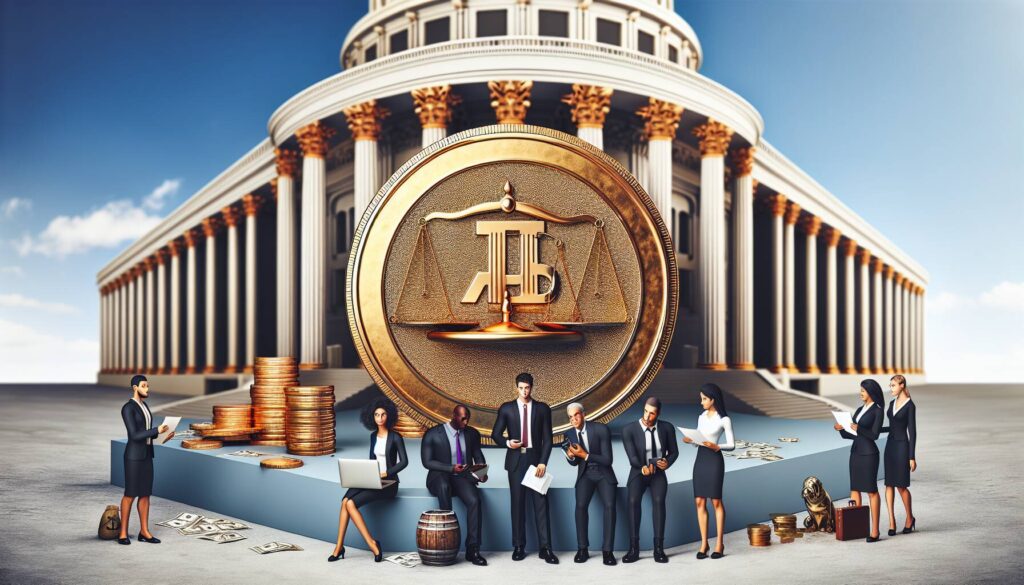The landscape of cryptocurrency legislation in the United States is undergoing significant changes as the House of Representatives and Senate unite to establish a joint working group dedicated to advancing crypto regulations. In a notable press conference held in Washington, David Sacks, speaker and appointed crypto czar by former President Donald Trump, expressed his ambition to bolster American supremacy in the realm of digital assets. “I look forward to working with each of you in creating a golden age in digital assets,” Sacks declared, highlighting that the establishment of a clear regulatory framework for cryptocurrencies is a top priority for the current administration.
Adding to the excitement, earlier on Tuesday, details of a Senate bill aimed at regulating stablecoins were unveiled. Authored by Senator Bill Hagerty, a Republican from Tennessee, this proposed legislation seeks to delineate oversight of stablecoin issuers, creating a dual regulatory approach involving both state and federal authorities—the Federal Reserve and the Office of the Comptroller of the Currency. Sacks emphasized the urgency of keeping innovation within the U.S. borders, stating, “We want to keep that innovation onshore in the U.S. Financial assets are destined to become digital, just like every analog industry has become digital.” His remarks reflect a growing sentiment among policymakers to ensure that the U.S. remains a key player in the evolving digital financial landscape.
“We want that value creation to happen in the United States, rather than giving it away to other countries,” Sacks added, reinforcing a message of national interest in the burgeoning cryptocurrency sector.

Advancements in U.S. Crypto Legislation
The recent developments in U.S. cryptocurrency legislation have significant implications for the financial landscape. Here are the key points to consider:
- Formation of a Joint Working Group:
- Consists of members from both the House of Representatives and Senate.
- Aims to create cohesive laws surrounding digital assets.
- Appointment of David Sacks as Crypto Czar:
- Goals include maintaining American leadership in the crypto sector.
- Highlights the administration’s commitment to digital asset regulation.
- Pro-Crypto Legislative Agenda:
- Sacks emphasizes that crypto is a priority for the administration.
- Seeks to foster innovation and economic growth within the U.S.
- Introduction of a Senate Stablecoin Bill:
- Proposed by Senator Bill Hagerty to regulate stablecoin issuers.
- Proposes a dual oversight system involving state and federal agencies.
- Promotion of Digital Assets:
- Sacks expresses the necessity of transitioning financial assets to digital formats.
- Aims to retain value creation within the U.S. economy.
These developments underscore the government’s push to embrace digital currency while balancing regulatory frameworks. For readers, this could lead to:
- Increased investment opportunities in the crypto market.
- Greater clarity and security in transactions involving digital assets.
- Enhanced innovation within the tech and financial sectors.
Crypto Legislative Push: A New Era for Digital Assets in the U.S.
The recent developments in the U.S. Congress regarding cryptocurrency legislation are set to reshape the landscape for digital assets, positioning the United States as a potential leader in this burgeoning sector. David Sacks, appointed by Donald Trump as the crypto czar, has expressed a firm commitment to ensure American dominance in the digital asset market. This initiative comes at a crucial time when global competition in digital finance is intensifying.
Comparing Competitive Advantages: What sets this legislative movement apart from previous attempts is the collaborative approach between the House and Senate, aimed directly at creating a clear framework for crypto regulation. This cooperation has the potential to streamline the complex regulatory environment that has historically hindered innovation in the U.S. By establishing oversight mechanisms for stablecoins through a bipartite system involving federal and state regulators, proponents argue that it will not only enhance consumer protection but also foster a fertile ground for innovation within American borders.
Furthermore, Sacks emphasizes maintaining innovation onshore, highlighting the risk associated with allowing other countries to dominate the digital asset space. This initiative could attract both established crypto firms and new startups to set roots in the U.S., thus bolstering the economy and positioning American firms as leaders in the tech-driven financial landscape.
Potential Disadvantages: However, there are hurdles. The division of regulatory responsibilities might lead to confusion or even regulatory arbitrage, where companies seek to operate in the most favorable jurisdictions. Additionally, critics often cite the potential for stifling innovation with excessive regulation. If the regulations are too restrictive or poorly designed, they could push entrepreneurs to relocate to more crypto-friendly environments, causing a loss in talent and investment.
Stakeholder Impact: On the one hand, established financial institutions and traditional investors may benefit from clearer regulations that promote stability in the market. Conversely, smaller startups and the decentralized finance community might face challenges as they navigate this emerging regulatory landscape. As Sacks gears up for a “golden age in digital assets,” it’s crucial for these entities to voice their concerns to ensure that the legislation does not inadvertently impose barriers to entry for innovation.
In essence, while the collaborative push in Congress may signal a new horizon for cryptocurrency in the U.S., it also remains imperative for stakeholders to engage in the legislative process to safeguard the needs of all players in the digital economy.

















